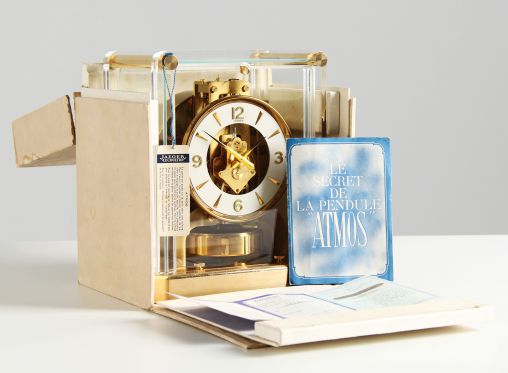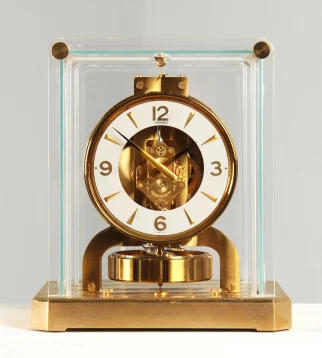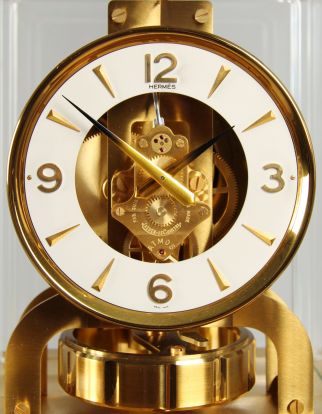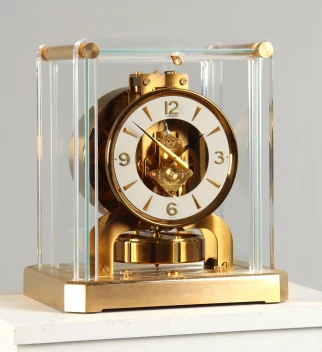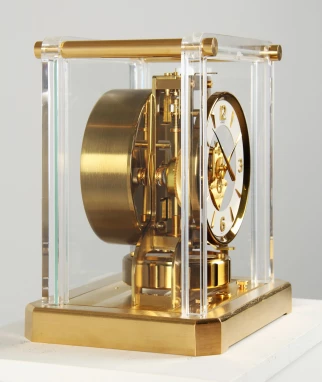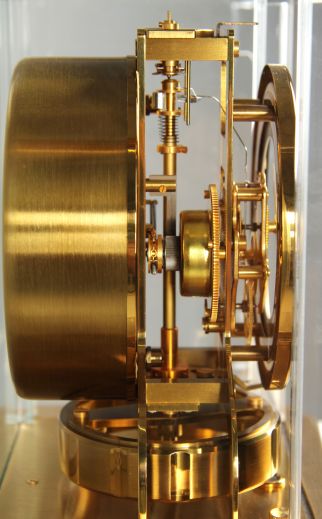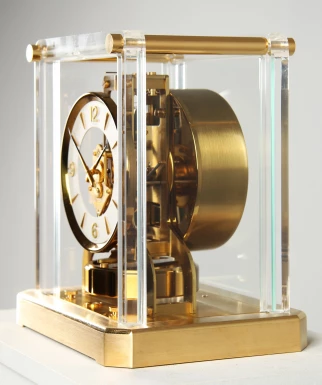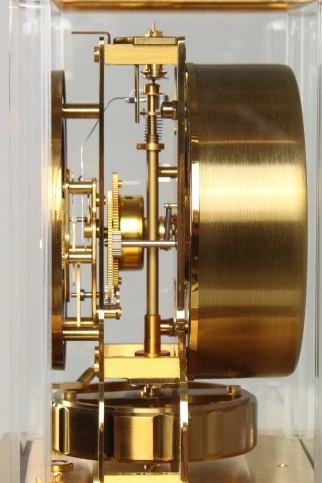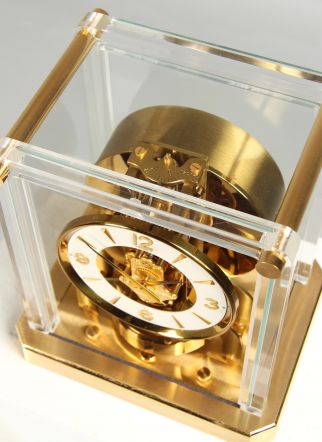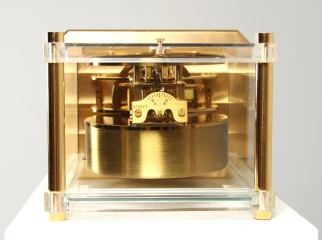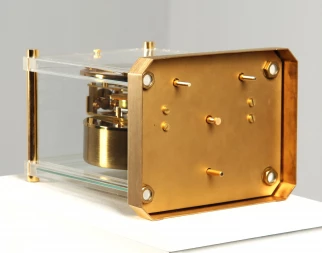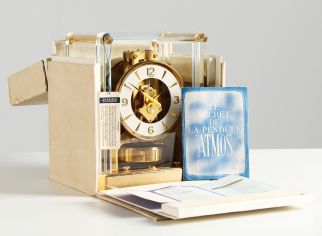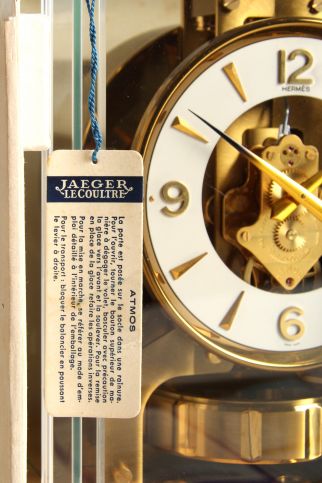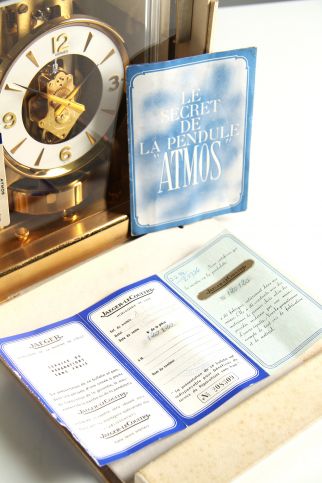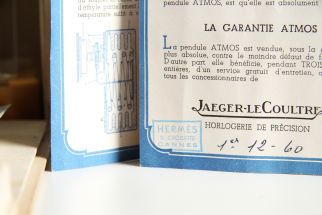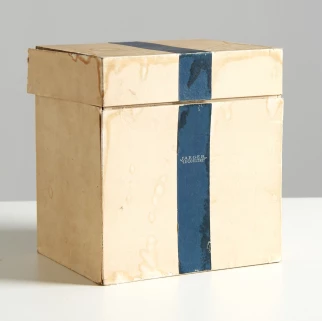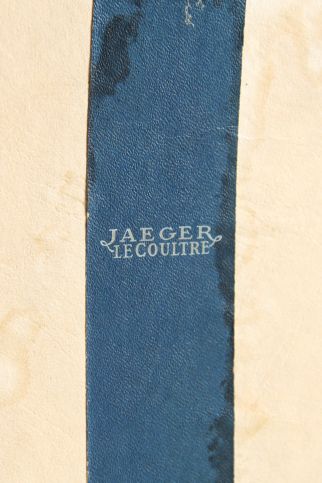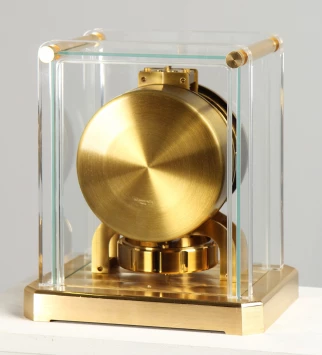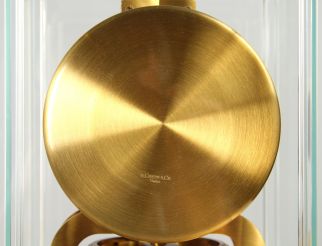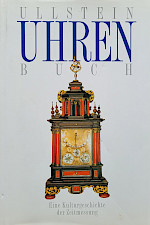Jaeger LeCoultre - Atmos clock in full set
Switzerland
Brass, glass, plexiglass
Year of manufacture 1959
Dimensions: H x W x D: 23.5 x 20.5 x 16 cm
Description:
Atmos calibre 526 in a glass/Plexiglas case with gold-plated base and crossbars.
White dial ring with gold numerals and hour markers.
Serial number: 120120
Year of manufacture: 1959
The model offered here was produced for Hermès in 1959 and sold in the Hermès store in Cannes in December 1960. You can see the corresponding imprint on the dial ring below the 12.
Original and included in the delivery are the shipping box and the papers stamped by Hermès.
Interesting facts:
Generations of inventors have endeavoured to construct a perpetual motion machine - and one by one they have been disappointed to discover that their designs did not work. Today we know that it is technically impossible to build a machine that works continuously without consuming energy. Apart from wear and tear, a machine only works as long as it is supplied with energy: Electricity, gas, petrol...
Without human intervention and practically without wear and tear, the Atmos does not run without energy consumption, but it is fed by an energy source that can be described as "eternal": It draws its energy from the constant fluctuations in air temperature. The Atmos literally lives from the air.
In order to utilise the temperature fluctuations as an energy source, a suitable medium had to be found. The choice fell on ethyl chloride (C2H5Cl) - a substance that dentists know as an anaesthetic. Ethyl chloride has a very high coefficient of thermal expansion between 10 and 27°C, i.e. the volume change is particularly large in this temperature range.
The round can, which can be seen on the back of the watch, contains a bellows-like expansion chamber. Like an accordion, it moves with temperature fluctuations and compresses a spiral spring. The force is transferred to the mainspring barrel of the movement via a small chain (shown in one of the photos).
A temperature fluctuation of approx. 1°C provides the drive energy for around 48 hours.
[Source: Jaeger LeCoultre - Product insert]
Condition:
Very nice condition. The base and the crossbars at the top of the case are newly gold-plated.
The clock runs flawlessly and reliably.
The original shipping box, the so-called tabernacle, has clear signs of age and wear.
You can find interesting facts about the ATMOS from Jaeger LeCoultre in the specialised literature:
Jürgen Abeler - Ullstein-Uhrenbuch p. 173
Negretti / De Vecchi - Faszination Uhr p. 195
Article found under: Clocks
Also interesting
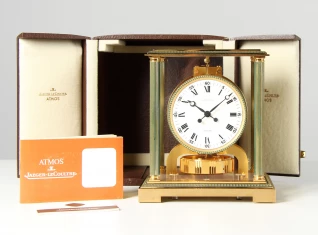
Jaeger LeCoultre - Atmos Vendome in a full set
Switzerland
Brass gold plated
Year of manufacture 1978
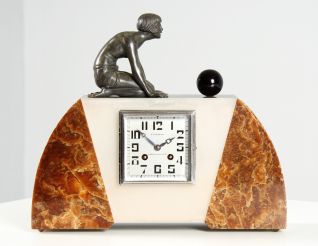
Art Deco mantel clock
France
Marble, metal
Art Deco around 1930
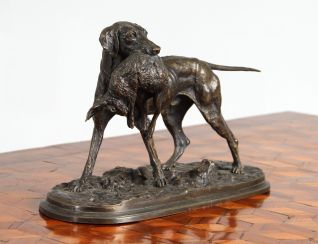
Pierre-Jules Mène - Hunting dog with a hare in its muzzle
France
Bronze
around 1870
